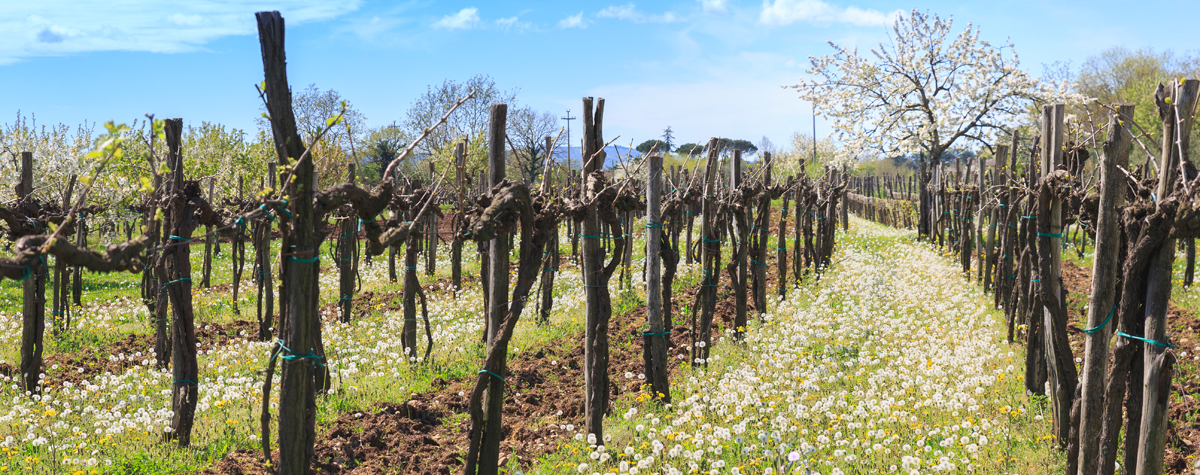However, cover crops can reduce grape yields and are sometimes more work intensive than bare soil management.
The type of soil management is not only determined by whether a vineyard is organic or conventionally cultivated. In fact, decisions are frequently based on other considerations.
These aspects have been the subject of a qualitative survey across four different European countries, namely Austria, France, Romania and Spain. The results give an interesting view of the general picture.
.jpg)
'If there is a risk that a dry summer might occur... winegrowers tend towards bare soil'The climatic conditions in the vineyards studied varied between semi-arid (Spain), temperate oceanic (France, above), Pannonian (Austria) and temperate-continental (Romania). The marketing strategies of the vineyards also differed widely. While in Austria (Carnuntum, Lower Austria) and France (Coteaux du Layon, Loire, Angers) the winegrowers were orientated towards direct marketing, in Romania (Tarnave, Transylvania) and Spain (Montilla-Moriles, Cordoba) the grapes were mostly sold to cooperatives.
These are two of the most important factors when it comes to making decisions on soil management. In dry climates, winegrowers often see cover crops as competitors for water and nutrients and even if the climate is not unusually dry, there is always a risk that a dry summer might occur. If this risk is perceived, winegrowers tend towards bare soil.
On the marketing side, winegrowers who are involved in direct marketing are especially aware of the positive effect of a green image on consumers’ willingness to pay more, and are more eager to adopt cover crops.
Furthermore, direct sellers are often in a better economic position than grapegrowers who sell grapes to a cooperative, because of the added value created in the winemaking process. A profitable business is an important basis to enable winegrowers to take the risk of a new soil management strategy – especially since cover crops are a more labour intensive management method which may require the learning of new skills.
In addition, traditional thinking sometimes prevents the adoption of cover crops since, for some, vineyards have to look tidy and clean like a garden. This is only possible without weeds between the vines. Opposite to that mind-set, winegrowers who adopt cover crops appreciate the green look and flowers which attract bees and butterflies. These vintners also recognise the benefits of cover crops for the soil and the overall environment.
.jpg)
The protection of soil is of special importance in regions like Montilla-Moriles in Spain (above), which is affected by immense erosion. Here, cover crops could be a useful tool, but the reluctance to switch seems to be rather high because water is a scarce factor.
.jpg)
Vineyards in Tarnave, Romania (above), are grown on good quality, heavy soil. Grass between the rows is sometimes used to improve the practicability for tractors but in most cases bare soil is assumed to be good agricultural practice.
In contrast, in France and Austria (below) we came across well-informed direct sellers with a distinct desire "to take care of the environment".
.jpg)
The acknowledgment that cover crops come along with more labour and certain risks was stated in all four regions. Despite that, in every region there were pioneers gaining experiences with cover crops.
Conclusion
Winegrowers often need to gain better knowledge of the most suitable cover crop management and might need some financial support to take the risk.
SCHÜTTE, R., & BERGMANN, H., (2019) The attitudes of French and Spanish winegrowers towards the use of cover crops in vineyards. Journal of Wine Research 0(0): 1–15.
This research was funded through the 2013/14 BiodivERsA/FACCE-JPI joint call for research proposals and the Federal Ministry of Education and Research (Bundesministerium für Bildung und Forschung). For updates on the project's results, click here.













.png)






